Are you a Quiet Speculation member?
If not, now is a perfect time to join up! Our powerful tools, breaking-news analysis, and exclusive Discord channel will make sure you stay up to date and ahead of the curve.
October is upon us, which means that it's time to do another metagame update. Modern continues to chug along in this paperless world. And better for me, Wizards seems to have finally gotten its act together and is regularly reporting results. Ever since I started caring about MTGO, I've had to deal with really inconsistent reporting. Events would just be randomly missing with no explanation. Apparently, that was a bug that's finally been fixed.
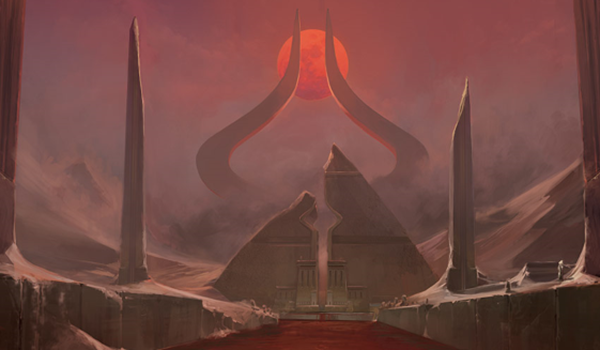
As a result, I could log a minimum two Challenges and five Preliminaries per week. With a few extra premium events thrown in. This resulted in the new largest data set I've ever worked on, with 611 decks in total, or almost 100 more than in August. While still below the thousand that would be ideal, September's data is still more robust than August's and as valid as currently possible.
It's worth noting that September was also a new set release. In case anyone forgot. This means that there was far more churn in the meta than in August as decks absorbed new cards, new decks emerged, and others fundamentally changed. I'll be sure to point out and assess the main differences.
September Metagame
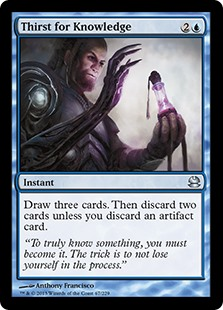 To make the tier list, a given deck has to beat the overall average population for the month. The average is my estimate for how many results a given deck "should" produce on MTGO. To be a tiered deck requires being better than "good enough". For September, the average population was 8.37, meaning that a deck needed 9 results to beat the average and make Tier 3. Then, we go one standard deviation above average to set the limit of Tier 3 and cutoff to Tier 2. The Stdev was 9.71, so that means add 10 results and Tier 2 starts with 20 results and runs to 30. Another Stdev above that is Tier 1, meaning 31 decks or more.
To make the tier list, a given deck has to beat the overall average population for the month. The average is my estimate for how many results a given deck "should" produce on MTGO. To be a tiered deck requires being better than "good enough". For September, the average population was 8.37, meaning that a deck needed 9 results to beat the average and make Tier 3. Then, we go one standard deviation above average to set the limit of Tier 3 and cutoff to Tier 2. The Stdev was 9.71, so that means add 10 results and Tier 2 starts with 20 results and runs to 30. Another Stdev above that is Tier 1, meaning 31 decks or more.
The Tier List
I counted 73 distinct decks in the data. Only 23 decks made it into the Tier list, coincidentally the same as in August. Interestingly, the number of singletons was down to 15, which is a small drop in absolute terms but a dramatic decrease in terms of percentage. This might mean that the metagame is getting more rigid, but it's more likely a function of the population. I know that several decks posted multiple results due to the same pilot doing well in several events. Such occurrences are to be expected the larger the data grows, so I wouldn't read anything into fewer singletons. Mono-Green Stompy was not in there though, which means it gets to return to its proper position as my whipping boy.
| Deck Name | Total # | Total % |
|---|---|---|
| Tier 1 | ||
| Ponza | 41 | 6.71 |
| Humans | 37 | 6.06 |
| Rakdos Prowess | 35 | 5.72 |
| Tier 2 | ||
| Izzet Prowess | 30 | 4.91 |
| Jund | 27 | 4.42 |
| Amulet Titan | 26 | 4.26 |
| Mono-Green Tron | 25 | 4.09 |
| Mono-Red Prowess | 22 | 3.60 |
| 4-Color Omnath | 22 | 3.60 |
| Tier 3 | ||
| Bant Uro | 18 | 2.95 |
| Burn | 18 | 2.95 |
| Ad Nauseam | 18 | 2.95 |
| Grixis Death's Shadow | 18 | 2.95 |
| Toolbox | 17 | 2.78 |
| Temur Uro | 16 | 2.62 |
| Bogles | 16 | 2.62 |
| Sultai Uro | 15 | 2.45 |
| Dredge | 14 | 2.29 |
| Eldrazi Tron | 14 | 2.29 |
| Rakdos Shadow | 12 | 1.96 |
| Sultai Reclamation | 10 | 1.64 |
| Mill | 9 | 1.47 |
| Death and Taxes | 9 | 1.47 |
The first thing of note is that Ponza has jumped to the top slot. It should also be noted that with 41 results, Ponza is only up two decks from August. It's also down four decks compared to August's top deck, Izzet Prowess. I think this is down to a broadening of the metagame in September. With 73 distinct decks (and a lot more if I get nitpicky about classification), the number of decks increased by 14% in September. The total results also increased by 18%. With more decks out there, it was harder for any one deck to gobble up results, and so the top deck is less impressive than before. This broadening is also my explanation for Tier 1 only having three decks make the cut off, the smallest I've had so far.
They're Back
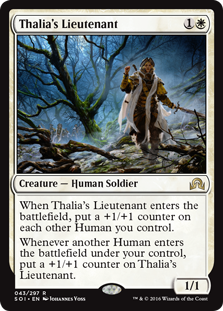 On that note, Humans is second place with 37 results after spending August just barely squeaking over the Tier 3 threshold with 8. That's not an increase, that's an explosion, more akin to the deck's arrival in Modern than the return of an established deck. While I can only guess the reason, I suspect that Zendikar Rising was a factor. As I've noted, Humans is very strong against the landless combo decks the set enabled. This shift coupled with Humans already being decently positioned combined to bring the deck back in a big way. We'll see if it's sustained.
On that note, Humans is second place with 37 results after spending August just barely squeaking over the Tier 3 threshold with 8. That's not an increase, that's an explosion, more akin to the deck's arrival in Modern than the return of an established deck. While I can only guess the reason, I suspect that Zendikar Rising was a factor. As I've noted, Humans is very strong against the landless combo decks the set enabled. This shift coupled with Humans already being decently positioned combined to bring the deck back in a big way. We'll see if it's sustained.
Prowess Declining
Parallel to Humans's return is a decline in Prowess. The top two decks of August were Izzet and Rakdos Prowess, and Rakdos was the winningest deck by a large margin. The mighty have fallen. Rakdos Prowess lost six decks in September while Izzet lost fifteen and fell out of ![]() Tier 1. Mono-Red did improve itself, moving from Tier 3 to 2 with ten additional results. However, that's still a net loss of eleven decks from the top three prowess decks. And unlike in August, I didn't record any other variants that just didn't make the Tierings.
Tier 1. Mono-Red did improve itself, moving from Tier 3 to 2 with ten additional results. However, that's still a net loss of eleven decks from the top three prowess decks. And unlike in August, I didn't record any other variants that just didn't make the Tierings.
I think I know what happened with Rakdos Prowess, and I'll get to that in a minute. Izzet's dramatic fall is less certain. Some of it is certainly due to the format adjusting. Izzet was new in July and got established in August. Players have had time to familiarize themselves with the new deck and learn how to beat it. Thus, Izzet's not getting free wins from ignorance and poor responses. This consequently takes a lot of shine off a deck and it will get abandoned. Happens all the time on MTGO, which is relatively cheap compared to paper. However, that doesn't go far enough to explain a drop-off this dramatic. I suspect there's some metagame considerations at play too, and relatively bad matchups are on the rise.
Where's Uro?
On that note, the only deck that (consistently) plays Uro in Tier 1 or 2 is newcomer 4-Color Omnath at the bottom of Tier 2. All the rest are in Tier 3. In fairness, Sultai Uro Control and Temur Reclamation (with Uro) were Tier 3 in August too. However, Bant was a solid Tier 1 deck that fell a long way. I think this fall strongly linked to Jund rising up the Tier 2 rankings and Prowess falling off. As I've noted, Prowess preys on decks Uro is weak to and vice versa. The fall in one is abetting the fall of the other.
It's tempting to say that Uro's lost its bite in Modern. Especially given my history of disdaining the card. However, I wouldn't go that far. Given the stats so far, I think that the non-Bant Uro decks are Tier 3 decks. They're solid, but underwhelming compared to Bant versions. As for said Bant Uro, it underwent a transformation, and the ranking is deceptive.
Deceptive Stats
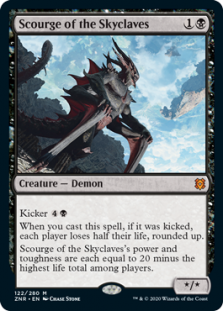 The numbers never tell the full picture. The Mark Twain quote is famous for a reason. There's no context to numbers, and in September, context is key. There was a new set release, and this meant that decks changed and evolved. For some it was more dramatic than others.
The numbers never tell the full picture. The Mark Twain quote is famous for a reason. There's no context to numbers, and in September, context is key. There was a new set release, and this meant that decks changed and evolved. For some it was more dramatic than others.
Remember Rakdos Prowess? Those numbers are slightly inflated. Sometime during the week after the set was released the deck evolved to be more midrange by adopting Death's Shadow and Scourge of the Skyclaves alongside Monastery Swiftspear and Soul-Scar Mage. I'm not sure when it happened, because Shadow had made it into Prowess lists before, and the lists looked overall similar. So  I just marked them as Rakdos Prowess. However, as the week wore on, it became clear that this was the new form of Rakdos Prowess and that it played very differently than before. So I started separating those decks as Rakdos Shadow. Rakdos Prowess should have fallen more, though I'm not going back through the hundreds of decks to figure out by how many.
I just marked them as Rakdos Prowess. However, as the week wore on, it became clear that this was the new form of Rakdos Prowess and that it played very differently than before. So I started separating those decks as Rakdos Shadow. Rakdos Prowess should have fallen more, though I'm not going back through the hundreds of decks to figure out by how many.
Similarly, Bant Uro mutated into 4-Color Omnath. It was very stark. Bant hadn't done much up until set release, and it barely had any afterwards. Instead there was a gap, and the Omnath decks started to appear. And these decks were clearly built off the Bant model, with the same planeswalkers and utility spells. The only additions were Omnath, Locus of Creation and a few burn spells. It's incorrect to just lump Bant Uro and Omnath together in the data because I don't know how many Omnath results are absorption vs. new players, but that was definitely a factor.
Power Rankings
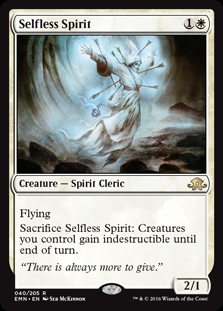 Tracking the metagame in terms of population is standard practice. However, how do results actually factor in? Better decks should also have better results. In an effort to measure this, I've started using a power ranking system in addition to the prevalence list.
Tracking the metagame in terms of population is standard practice. However, how do results actually factor in? Better decks should also have better results. In an effort to measure this, I've started using a power ranking system in addition to the prevalence list.
A reminder of how it works: as I go through the Preliminary and Challenge results, I mark each deck's record or placement respectively. Points are then awarded based on those results. Preliminaries report results based on record, so that's how the points are distributed. 5-0 is three points, 4-1 is two, and 3-2 is one point. Challenges are reported in terms of placing, so being Top 8 is worth three points, Top 16 is two, and being reported at all is one. The system is thus weighted to award more points to decks that perform well in Challenges rather than Preliminaries. The reason is simply that Challenges are larger and more competitive events, and the harder the field, the better a deck needs to be.
Power Tier List
The 611 decks earned a total of 991 points in September. The average points was 13.57, so 14 points makes Tier 3. The STdev was 15.78, meaning Tier 2 began at 31 points and Tier 1 is for 48 points or more. It was a bit concerning as I started assembling this month's power chart, as it looked like I did a lot of work for no benefit. Fortunately, that quickly changed. Once again, there are 22 decks instead of 23. However, this isn't a clean case of one deck falling out. A number of decks fell out of Tier 3 and several were added in.
| Deck Name | Total Points | Total % |
|---|---|---|
| Tier 1 | ||
| Ponza | 72 | 7.27 |
| Humans | 58 | 5.85 |
| Rakdos Prowess | 51 | 5.15 |
| Tier 2 | ||
| Izzet Prowess | 46 | 4.64 |
| Amulet Titan | 44 | 4.44 |
| Jund | 43 | 4.34 |
| Ad Nauseam | 38 | 3.83 |
| 4-Color Omnath | 38 | 3.83 |
| Mono-Green Tron | 36 | 3.63 |
| Mono-Red Prowess | 36 | 3.63 |
| Grixis Death's Shadow | 33 | 3.33 |
| Toolbox | 31 | 3.13 |
| Tier 3 | ||
| Temur Uro | 30 | 3.02 |
| Sultai Uro | 28 | 2.83 |
| Bant Uro | 26 | 2.62 |
| Bogles | 22 | 2.22 |
| Burn | 22 | 2.22 |
| Dredge | 20 | 2.02 |
| Eldrazi Tron | 19 | 1.91 |
| Rakdos Shadow | 17 | 1.72 |
| Valakut | 15 | 1.52 |
| UW Spirits | 14 | 1.41 |
The main deck I want to mention as making the list is UW Spirits. It was just under the cut for the population tiers, but just over for power. This indicates few pilots, but considerable success. I knew that my deck was well positioned, and it's my article, so I'll crow about it if I want too. Valakut was in the same boat. This is my catchall for Primeval Titan decks that clearly aren't Amulet Titan, nor the Toolboxy Vial Titan that showed up last month. Mill, Death and Taxes, and Sultai Reclamation all fell out of Tier 3. They were okay at sneaking into Prelim results, but that's about it.
The other thing to note is that Tier 1 was in the same order as population, and Ponza won by a considerable margin. Turns out that when 3-4 color decks and red aggro are in vogue, a Blood Moon deck with maindeck lifegain is a really good call. After the gap to Humans, there's also a pretty gentle progression through the lower tiers, which indicates a fair overall power distribution.
Tier 2 'Splosion
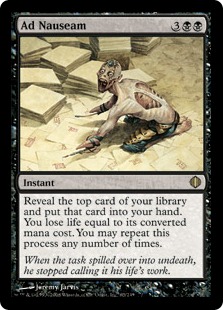 If Tier 1 was small and static, then it's Tier 2 where everything is happening. The power Tier 2 is larger than the population one, and is very different in rankings, too. This again indicates that power was more evenly distributed in September compared to August, and decks had a harder time outshining each other. I'd also like to draw attention to Ad Nauseam moving up from Tier 3 to being fourth place in Tier 2. The deck was clearly being underestimated in September and was able to rack up the points despite not being popular. Which may help to explain Humans's rise as an anti-combo deck.
If Tier 1 was small and static, then it's Tier 2 where everything is happening. The power Tier 2 is larger than the population one, and is very different in rankings, too. This again indicates that power was more evenly distributed in September compared to August, and decks had a harder time outshining each other. I'd also like to draw attention to Ad Nauseam moving up from Tier 3 to being fourth place in Tier 2. The deck was clearly being underestimated in September and was able to rack up the points despite not being popular. Which may help to explain Humans's rise as an anti-combo deck.
The Uro Cluster
An interesting development is the Uro cluster at the top of Tier 3. Given Bant's mutation, its position is not entirely surprising, but Temur and Sultai were lower in population. This indicates to me that all the decks are of similar power, and that Sultai was better positioned than the alternatives given that it was the least popular. In turn, I'd say that all the non-Omnath Uro decks are fairly interchangeable. What matters is not each deck's individual power but personal preference and how well positioned the support cards are at a given tournament.
Average Power Ranking
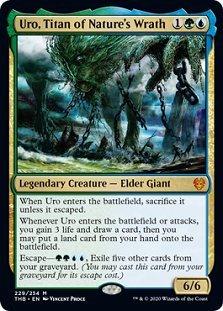 Finally, we come to the average power rankings. These are found by taking total points earned and dividing it by total decks, which measures points per deck. I use this to measure strength vs. popularity. Measuring deck strength is hard. Using the power rankings certainly helps, and serves to show how justified a deck's popularity is. However, more popular decks will still necessarily earn a lot of points. This is where the averaging comes in. Decks that earn a lot of points because they get a lot of results will do worse than decks that win more events, indicating which deck actually performs better.
Finally, we come to the average power rankings. These are found by taking total points earned and dividing it by total decks, which measures points per deck. I use this to measure strength vs. popularity. Measuring deck strength is hard. Using the power rankings certainly helps, and serves to show how justified a deck's popularity is. However, more popular decks will still necessarily earn a lot of points. This is where the averaging comes in. Decks that earn a lot of points because they get a lot of results will do worse than decks that win more events, indicating which deck actually performs better.
Power Over Population
It's not perfect, and ultimately I'm looking for something closer to baseball's Wins Above Replacement, but I haven't found anything that would work as well. If anyone has an idea, do let me know. As for the averages, the closer a deck's average is to 1, the more that it earned its spot purely through population. The closer it is to 3, the more that it was wins which determined the result. I've only done this for two months, so I'm unsure how to evaluate the numbers beyond that. The average rating so far has been 1.6, but I don't have the data to tell if that should actually be my cutoff or not, so I'll keep reevaluating the stats as I go.
It's unfair to do this for all 73 decks in the sample, as singletons that spike an event will beat everyone else, so I stick to just the power-tiered decks.
| Deck Name | Average Points | Power Tier Placement |
|---|---|---|
| Valakut | 2.14 | 21 |
| Ad Nauseam | 2.11 | 7 |
| UW Spirits | 2.00 | 22 |
| Temur Uro | 1.87 | 13 |
| Sultai Uro | 1.87 | 14 |
| Grixis Death's Shadow | 1.83 | 11 |
| Toolbox | 1.83 | 12 |
| Ponza | 1.76 | 1 |
| 4 Color Omnath | 1.73 | 8 |
| Amulet Titan | 1.69 | 5 |
| Mono-Red Prowess | 1.64 | 10 |
| Jund | 1.59 | 6 |
| Humans | 1.57 | 2 |
| Izzet Prowess | 1.53 | 4 |
| Rakdos Prowess | 1.46 | 3 |
| Mono-Green Tron | 1.44 | 9 |
| Bant Uro | 1.44 | 15 |
| Dredge | 1.43 | 18 |
| Rakdos Shadow | 1.42 | 20 |
| Bogles | 1.37 | 16 |
| Eldrazi Tron | 1.36 | 19 |
| Burn | 1.22 | 17 |
It's not too surprising that low-tier decks do best in this ranking. With fewer overall results, there are fewer low results to drag down their averages. That Ad Nauseam has the second best average is surprising. And it's well above 2 thanks to a higher-than-average number of Top 8's. This was a severely under-appreciated deck, and it's clear the meta wasn't ready. Correct that mistake in October. It's also worth noting how bad all the Rakdos Prowess suffered compared to August. It looks like the deck's time in the sun is over.
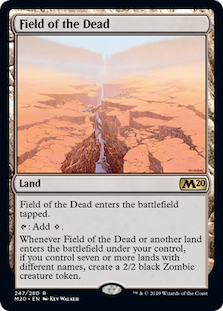 Change Is Coming
Change Is Coming
The meta is still adjusting to the new cards, but I expect that next time I run the data, that process will be complete. And then we'll know for certain whether Omnath is a diversifying or homogenizing force in Modern. Or whether Prowess can survive close inspection. Until then, pack combo answers, unlike was done last month!



